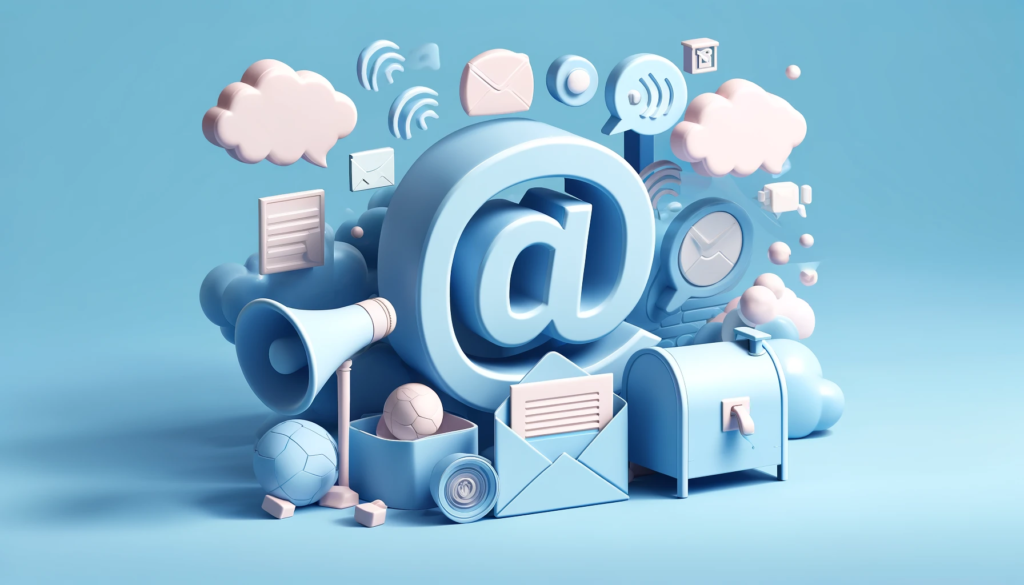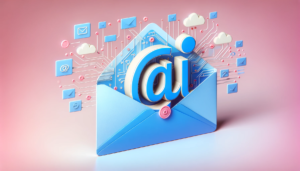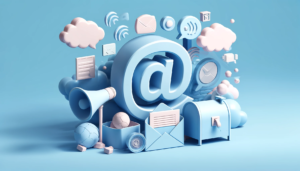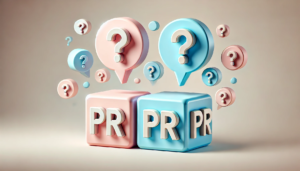Hey there, email enthusiasts!
Let’s face it, crafting captivating emails can feel like juggling flaming chainsaws in a clown costume. (Okay, maybe that’s a bit dramatic, but you get the picture.)
Also, I’m not just some girl who likes to hit “reply all” a little too much.
I actually analyze over 10,000 emails a month as a Head of Content (yes, you read that right) to stay on top of what’s working and what’s making recipients hit “unsubscribe” faster than you can say “autoresponder.”
So, buckle up and get ready to discover the hottest trends that will have your email open rates skyrocketing!
1. Interactivity in Emails
By weaving in interactive elements such as GIFs that do more than just sparkle, videos that can tell a story in a flash, and gamification that turns a mundane click into an adventure, you’re not just sending emails; you’re creating experiences.
I treat GIFs as an easy-to-create, eye-catching tool that can highlight calls to action, showcase products, or simply add a dash of humor to your emails.
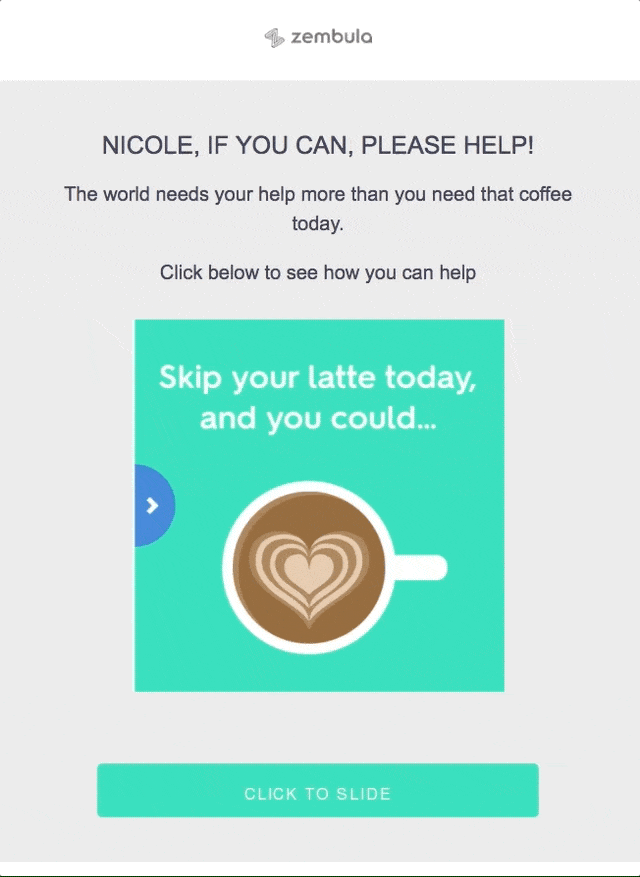
They’re particularly effective for drawing attention to specific content or offers and can be whipped up in minutes using tools like Adobe Photoshop or Canva.
Videos, on the other hand, take your storytelling to the next level. They’re perfect for conveying your brand’s message, sharing customer testimonials, or providing quick product demos.
Despite their higher production cost, videos can potentially increase email open rates by 19% and click rates by 65%, while also reducing unsubscribe rates by 26%.
The key to incorporating videos effectively is to keep them short and to the point, ensuring they complement rather than overwhelm your email content.

Campaign Monitor highlights the power of interactive emails in boosting engagement and fostering brand loyalty.
By requiring recipients to take action, interactive content transforms passive readers into active participants.
This not only makes the email experience more memorable but also significantly increases conversion rates.
Interactive content, including GIFs and videos, is rated more engaging than static content, with a staggering preference for interactivity over traditional emails.
Incorporating these interactive elements into your emails is not just about following a trend; it’s about acknowledging and leveraging the evolving expectations of consumers who crave more engaging, entertaining, and personalized content.
By doing so, you’re strengthening your relationship with your audience, leading to higher brand loyalty and ultimately, better conversion rates.
Remember: the ultimate goal is to entertain, inform, and engage your subscribers in a way that resonates with them, making every email an opportunity to deepen the connection with your brand.
2. Personalization and Segmentation
In 2024, personalization isn’t just the cherry on top — it’s the whole sundae.
Imagine walking into your favorite coffee shop and the barista already knows your order; that’s the level of personalization we’re talking about, but in your inbox.
Gone are the days when a “Dear Customer” was enough to catch your reader’s attention.
Today, it’s all about “Hey [Your Name], you left something in your cart!”
This shift towards personalization has proven to be a game-changer, significantly boosting open rates and conversions.

Brands are getting crafty with personalized content and offers, slicing and dicing their email lists like seasoned chef to cater to the distinct tastes of their audience segments.
For instance, an online retailer might send you an email showcasing sports gear right after you’ve browsed their athletic wear section, hitting you with a “We thought you might like these” message that feels like they’ve read your mind.
Or take Spotify’s end-of-year “Wrapped” campaign, which is essentially a love letter to your musical tastes, offering insights into your most-listened-to genres and artists.
This isn’t just clever marketing; it’s personalization magic at work, turning generic messages into tailored conversations that resonate on an individual level.
The numbers don’t lie: emails with personalized subject lines are 26% more likely to be opened. And when it comes to conversions, personalized emails deliver 6x higher transaction rates.

But the real beauty of personalization and segmentation is not just in the numbers; it’s in the relationship-building with your audience, transforming faceless recipients into engaged, loyal customers who feel seen and understood.
So, if you’re not already personalizing your email campaigns, you might as well be sending your messages straight to the digital void.
3. The Role of AI and Automation
The rise of artificial intelligence (AI) and automation is like adding a turbo boost to your trusty car.
Suddenly, you’re not just sending emails; you’re delivering hyper-targeted messages at warp speed, thanks to these smart tech sidekicks.
AI and automation are shaking things up, turning the tedious task of segmenting audiences into a walk in the park.

Imagine having a personal assistant who knows your subscribers better than they know themselves, categorizing them based on their behaviors, interests, and even their likelihood to engage with your content.
But wait, there’s more!
Top AI email assistants are not just about organizing your audience into neat little groups.
They’re also masters of personalization, crafting messages so spot-on that your subscribers might wonder if you’ve been reading their diaries.
From suggesting the perfect product recommendations to tailoring email content based on past interactions, AI makes your emails feel like they’re coming from a friend rather than a faceless brand.
And let’s not forget about scheduling.
AI and automation are the ultimate planners, analyzing heaps of data to determine the optimal time to hit send, ensuring your message lands in inboxes at the moment your subscribers are most likely to engage.
This isn’t just throwing darts in the dark; it’s a data-driven strategy to boost open rates and conversions.
In a nutshell, embracing AI and automation in your email campaigns means you’re not just keeping up with the times; you’re setting the pace.

It’s about making every email count, delivering personalized experiences at scale, and doing it all with the efficiency of a well-oiled machine.
So, if you’re ready to give your email marketing a futuristic facelift, AI and automation are your go-to tools for success in 2024.
4. Compliance and Privacy Concerns
Building an email list ethically is not just about avoiding the spam folder; it’s about winning the trust marathon.
Start with a crystal-clear opt-in process that explains what subscribers are signing up for and how often they’ll hear from you.
Transparency is your best friend here.

And remember, buying email lists is a big no-no – it’s like showing up uninvited to a dinner party. Instead, focus on creating irresistible content that makes signing up a no-brainer.
Ensuring compliance in your email campaigns isn’t just a legal checkbox; it’s a commitment to respect and value your audience’s privacy.
Regularly audit your email practices to ensure they’re up to snuff and don’t forget to keep an eye on those consent records – they’re your golden ticket if someone decides to question your email ethics.
By adhering to these guidelines, you’re not just dodging legal bullets; you’re building a brand that stands for integrity and trust, which, in the long run, is worth its weight in email gold.
5. Importance of Mobile Optimization
Ensuring your emails are mobile-friendly isn’t just polite; it’s paramount.
With the majority of humans glued to their smartphones like bees to honey, it’s no surprise that a significant chunk of emails are first opened on a mobile device.
Ignoring this fact is akin to serving a gourmet meal on a frisbee; it just doesn’t do your content justice.
To ensure your emails not only reach the inbox but are also digestible on the small screen, start with responsive design.

This is the secret sauce that ensures your emails automatically adjust to fit whatever device they’re viewed on, be it a phone, tablet, or desktop.
Think of it as yoga for your emails, offering the flexibility to look great and perform well, no matter the screen size.
Additionally, consider the finger-friendly principle: buttons and links should be easy to tap, and fonts should be readable without squinting or zooming.
It’s about creating a pleasant reading experience that doesn’t require a magnifying glass or the fingers of a fairy.
And, keep the content concise; a thumb-scroll marathon is no one’s idea of fun.
By adhering to these mobile optimization best practices, you’re not just ticking a technical box; you’re significantly enhancing user engagement and ensuring your message doesn’t just land but resonates.
6. The Shift Away from Traditional Metrics
There’s a seismic shift happening right beneath our keyboards.
We’re moving away from traditional metrics like open rates, which, let’s face it, are the equivalent of judging a book by its cover.
Instead, we’re diving deeper into more meaningful measures of engagement and conversion.
It’s like realizing that the real party isn’t at the door but on the dance floor where the action happens.
This change is akin to focusing on who’s dancing, who’s chatting by the punch bowl, and who’s sneaking out the back door, rather than just counting how many people showed up.
Driving this shift are recent changes in privacy policies, most notably Apple’s Mail Privacy Protection.
This move has thrown a wrench in the works for open rate tracking, making it about as reliable as a chocolate teapot.
With these protections in place, marketers can no longer rely on opens as a primary indicator of success. Instead, we’re turning to metrics that tell us more about the customer journey and their dance moves, so to speak.
Engagement rates, click-throughs, and conversion metrics are stepping into the spotlight, offering a more nuanced view of how well our campaigns resonate with audiences.

This evolution in metrics is not just about adapting to new rules; it’s about embracing a more customer-centric approach to email marketing.
By focusing on deeper engagement and conversion metrics, we’re getting a clearer picture of what makes our audience tick, what keeps them coming back for more, and what ultimately drives them to take action.
It’s a shift from quantity to quality, ensuring that our email marketing strategies are not just heard but truly listened to.
7. Innovative Email Designs
This trend towards innovative design isn’t just about making emails pretty; it’s a strategic move to snag the ever-wandering attention of readers in the crowded digital party that is their inbox.
Picture emails that pop with bold colors, interactive elements that invite clicks like a friendly nod across the room, and layouts so sleek they’d make a catwalk model jealous.

Brands are leveraging design not just as a wrapper but as a core component of their messaging, understanding that a well-designed email is like a well-tailored suit: it speaks volumes before a word is read.
They’re using visuals to guide the reader’s journey through the email, employing typography that conveys tone and personality, and integrating imagery and graphics that do more than decorate — they narrate.
It’s about creating an immersive experience that captivates from the subject line to the CTA, turning a simple message into a compelling story that’s hard to ignore.
This shift towards design-driven emails is backed by the understanding that in the digital age, an email’s appearance can significantly impact its effectiveness.
Brands that master this art not only stand out in a crowded inbox but also forge a stronger connection with their audience, driving engagement and conversions through the roof.
In essence, innovative email designs are not just about catching the eye; they’re about enchanting the mind and sparking action, proving that in the world of email marketing, beauty is far more than skin deep.
8. Leveraging User-Generated Content
Diving into the treasure trove of user-generated content and showcasing it in your emails is like telling your audience, “Hey, we’re in this together!”.
Imagine opening an email and seeing a photo or review from someone just like you, singing praises, or showcasing a brand’s product in real life.
It instantly adds a layer of trust and relatability that polished, professional content can’t always achieve.
Brands are getting savvy with this, turning their emails into galleries of customer experiences.

For example, a fashion brand might spotlight customer photos wearing their latest line, sourced directly from Instagram tags or hashtags.
It’s a win-win; customers get a moment in the spotlight, and the brand gets authentic visuals that resonate more deeply with their audience.
Or consider a tech company that includes customer testimonials and reviews in their product launch emails, giving prospects a taste of real-world benefits directly from their peers.
This strategy not only celebrates the voice of the customer but also cleverly leverages social proof, encouraging higher click-through rates and deeper engagement.
When people see others enjoying and recommending a product or service, it’s like getting a recommendation from a friend rather than a company.
It’s this genuine, customer-centric approach that can transform a standard email campaign into a compelling narrative that audiences eagerly await.
So, by incorporating UGC, brands aren’t just sending emails; they’re crafting a community narrative that invites more interaction, trust, and loyalty.
9. Gamification
Gamification has sprinted from the sidelines straight into the spotlight, transforming the email marketing game in the process.
It’s like adding a pinch of competitive spice to the usual recipe of newsletters and promotions, making the mundane magical.
By incorporating game elements — think points, leaderboards, challenges, and rewards — into email campaigns, brands aren’t just sending messages; they’re inviting subscribers to play, engage, and immerse themselves in a brand-centric universe.

Strategically deploying gamification in emails can turn a standard campaign into an interactive adventure.
For instance, launching a challenge that rewards subscribers for completing certain tasks, such as sharing the brand’s content on social media or making a purchase within a specific timeframe, can significantly boost engagement rates.
Another strategy involves quiz or poll-based games that not only entertain but also collect valuable insights about preferences and behaviors.
These interactive elements can be further sweetened with incentives like exclusive discounts, badges, or early access to new products, making participation irresistible.
Moreover, embedding puzzles or treasure hunts that require subscribers to visit the brand’s website to solve clues can drive traffic and deepen brand exploration.
It’s a clever way to blend entertainment with subtle education about the brand’s offerings.
The key to successful gamification lies in ensuring the games are easy to understand yet challenging enough to be engaging, and most importantly, align with the brand’s identity and audience’s interests.
10. Sustainability in Email Marketing
Sustainability in email marketing isn’t about planting trees with every email sent (though that’s a cool idea), but it’s definitely about greening our digital practices.
In a world where digital carbon footprints are a real concern, making email marketing more sustainable is about being mindful of the electronic waste we generate.
Every email has a carbon footprint, thanks to the energy used by servers to send, store, and filter them. So, how do we make our email marketing greener?
First off, consider the frequency of your emails. It’s like watering plants; too much and you drown them, too little and they wither.
Find that sweet spot where your emails are anticipated, not treated as inbox clutter.
This not only reduces the digital load but also enhances engagement.
Next, think about your email list hygiene.
Regularly cleaning your list to remove inactive subscribers is like weeding a garden; it ensures your resources aren’t wasted on uninterested parties.
Moreover, adopting a minimalist design for your emails can also contribute to sustainability.
Heavily designed emails with large images increase data sizes, thereby consuming more energy.
Opting for simple, text-based designs can significantly reduce the energy required to send and store these emails.
Additionally, encouraging subscribers to engage in sustainable practices, such as recycling or supporting eco-friendly products, can amplify your brand’s commitment to sustainability.
In essence, sustainability in email marketing is about striking a balance between effective communication and environmental responsibility.
By optimizing send frequencies, maintaining a clean subscriber list, simplifying email designs, and promoting sustainable actions, we not only minimize our digital carbon footprint but also build a brand ethos that resonates with the environmentally conscious consumer.
It’s a journey towards making every click count, not just for our metrics but for the planet too.
Conclusion
Вiving into the world of email marketing trends is like trying to teach my grandma to use a smartphone — tricky, but oh-so-rewarding when it clicks!
First up, AI and automation are the new wizards on the block, magically making my emails as personalized as my coffee orders.
Then there’s gamification, turning my newsletters into mini-games.
Who knew getting folks to click could be as fun as bingo night at the community center?
Sustainability is the word on everyone’s lips (or inboxes), showing we care more about our planet than just spamming folks.
And let’s talk about the metrics makeover! We’re moving from “Did they open it?” to “Did they love it enough to click?”—a much-needed reality check.
Designs in emails are getting a facelift, becoming so pretty that I sometimes just stare instead of reading.
Compliance isn’t just a fancy word for “rules” anymore; it’s about playing it cool and keeping trust with my audience.
Adapting to these trends isn’t just smart; it’s survival of the fittest.
Let’s keep it real, keep it fun, and most importantly, keep it interesting.
Frequently Asked Questions
What is the future of email marketing?
The future of email marketing in 2024 is promising, with continued advancements in personalization, automation, and AI-driven insights. Marketers will leverage these technologies to deliver more targeted and relevant content, resulting in higher engagement rates. Additionally, interactive emails and integration with other digital channels will enhance user experiences and drive better results.
What is the next big thing in email marketing?
The next big thing in email marketing is likely to be the increased use of AI and machine learning to personalize and optimize campaigns. This includes predictive analytics to anticipate customer behavior, advanced segmentation, and dynamic content that adapts to individual preferences in real time. Additionally, integrating email with other digital channels to create seamless, multi-channel experiences will be key.
What are some emerging trends in email design for 2024?
Emerging trends in email design for 2024 include the use of interactive elements such as carousels, accordions, and surveys within emails, making them more engaging and dynamic. Additionally, dark mode optimization, minimalist design, and mobile-first layouts are becoming essential to enhance user experience and accessibility.
What is the best day for email marketing in 2024?
The best day for email marketing in 2024 will depend on your specific audience and industry. However, generally, studies have shown that Tuesdays and Thursdays tend to have higher open and click-through rates. It’s crucial to analyze your own data and perform A/B testing to determine the optimal day for your campaigns.
What metrics should be tracked to measure email marketing success?
Key metrics to track for measuring email marketing success include open rates, click-through rates, conversion rates, bounce rates, and unsubscribe rates. Additionally, tracking metrics like ROI, list growth rate, and engagement over time can provide deeper insights into the effectiveness of your email campaigns and areas for improvement.
How can businesses improve email deliverability?
To improve email deliverability, businesses should focus on maintaining a clean email list by regularly removing inactive or invalid email addresses, using double opt-in methods to verify subscribers, and ensuring emails are relevant and valuable to recipients. Additionally, monitoring sender reputation, avoiding spammy language, and complying with email marketing regulations are crucial.
What are some best practices for segmenting email lists?
Best practices for segmenting email lists include dividing subscribers based on demographics, purchase history, engagement levels, and preferences. Using segmentation allows marketers to tailor content and offers to specific groups, resulting in more relevant and effective email campaigns that drive better results.

